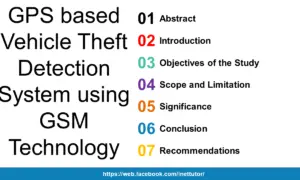Digital Twinning Projects Ideas
In today’s rapidly evolving digital landscape, businesses and industries are constantly seeking innovative ways to enhance efficiency, reduce costs, and stay ahead of the competition. One of the most exciting advancements in this arena is digital twinning—a technology that is revolutionizing how we design, monitor, and optimize physical assets and processes.
But what exactly is digital twinning? Imagine having a virtual replica of a real-world object, like a factory, a vehicle, or even a city. This digital twin allows you to test scenarios, predict outcomes, and make data-driven decisions—all without disrupting the actual physical system. From improving production lines to personalizing healthcare, digital twins are unlocking new possibilities across a wide range of industries.
In this blog post, we’ll explore what digital twinning is, why it’s becoming a game-changer for businesses, and how you can leverage this technology in your projects. Whether you’re new to the concept or looking to deepen your understanding, this guide will help you navigate the exciting world of digital twins and their transformative potential.
Introduction
Table of Contents
What is Digital Twinning?
Digital twinning is a cutting-edge technology that creates a virtual replica, or “twin,” of a physical object, system, or process. This digital twin mirrors the real-world version, allowing you to monitor, analyze, and even simulate how it behaves in different scenarios—all from a computer screen.
For example, imagine having a digital twin of a car engine. Engineers can test how the engine will perform under different conditions without physically running it, saving time and resources. This concept is now being used in various industries, from manufacturing and healthcare to smart cities and energy management.
Why Consider Digital Twinning Projects?
Digital twinning offers several key benefits that make it an attractive option for businesses and innovators:
- Improved Efficiency: By simulating real-world scenarios, digital twins help optimize processes, reduce waste, and improve overall efficiency. For example, in a factory setting, a digital twin can identify bottlenecks and suggest ways to streamline production.
- Predictive Maintenance: Digital twins can predict when equipment might fail or need maintenance, helping companies avoid costly downtime. This predictive capability is particularly useful in industries like manufacturing, where machinery breakdowns can lead to significant losses.
- Enhanced Decision-Making: With real-time data and simulations, digital twins provide valuable insights that support better decision-making. Whether you’re managing a power grid or planning urban infrastructure, a digital twin can help you make informed choices.
The rise of technologies like the Internet of Things (IoT), artificial intelligence (AI), and advanced data analytics has made digital twinning more accessible and powerful than ever. As these technologies continue to evolve, the potential applications for digital twins are expanding rapidly, making this an exciting area for innovation and development.
List of Digital Twinning Projects Ideas
- Manufacturing and Industry:
- Smart Factories and Production Lines:
- Create digital twins of manufacturing processes to optimize production, reduce waste, and increase efficiency. This project could involve simulating different production scenarios to find the best methods for improving output and minimizing downtime.
- Predictive Maintenance and Asset Management:
- Develop digital twins of machinery and equipment to predict when maintenance is needed. This can help avoid unexpected breakdowns and reduce maintenance costs by addressing issues before they become serious.
- Product Design and Development:
- Use digital twins to simulate the design and testing of new products. This allows engineers to refine designs, perform virtual tests, and speed up the development process, saving both time and resources.
- Supply Chain Optimization:
- Create digital twins of supply chains to monitor and optimize logistics. This project could help companies manage inventory more efficiently, reduce transportation costs, and improve overall supply chain resilience.
- Urban Planning and Infrastructure:
- Smart Cities and Urban Development:
- Develop digital twins of entire cities or urban areas to plan and manage infrastructure. This can help city planners optimize traffic flow, energy usage, and public services, leading to more sustainable and efficient urban environments.
- Transportation and Traffic Management:
- Create digital twins of transportation networks to simulate and manage traffic patterns. This project could focus on reducing congestion, improving public transportation, and enhancing road safety.
- Building and Infrastructure Maintenance:
- Use digital twins to monitor and maintain buildings, bridges, and other infrastructure. This can help identify structural issues early, plan maintenance activities, and extend the lifespan of critical infrastructure.
- Disaster Management and Resilience:
- Develop digital twins for disaster preparedness and response. This project could simulate natural disasters like floods or earthquakes to plan effective response strategies and improve community resilience.
- Healthcare:
- Personalized Medicine and Patient Care:
- Create digital twins of individual patients to personalize treatment plans. By simulating how a patient’s body might respond to different treatments, this project can help doctors make better-informed decisions and improve patient outcomes.
- Medical Device and Equipment Development:
- Use digital twins to design and test medical devices and equipment. This allows for virtual prototyping, reducing the need for physical trials and speeding up the development of new healthcare technologies.
- Surgical Simulations and Training:
- Develop digital twins for surgical training simulations. This project can help surgeons practice complex procedures in a virtual environment, improving their skills and reducing the risks associated with real surgeries.
- Healthcare Facility Planning and Management:
- Create digital twins of hospitals or healthcare facilities to optimize operations. This could involve simulating patient flow, resource allocation, and emergency response to improve the efficiency of healthcare services.
- Education and Training:
- Virtual and Augmented Reality Learning Experiences:
- Develop digital twins combined with virtual or augmented reality to create immersive learning environments. This project can make education more engaging and accessible, allowing students to explore complex concepts in a hands-on way.
- Skill Development and Training Simulations:
- Create digital twins for training simulations in fields like engineering, medicine, or aviation. This project can help learners practice real-world skills in a controlled, risk-free environment.
- Educational Resource Management:
- Use digital twins to manage and optimize educational resources, such as classrooms, labs, and libraries. This can help schools and universities allocate resources more effectively and improve the learning experience for students.
- Other Potential Applications:
- Energy and Utilities:
- Develop digital twins for power plants, grids, and utility networks to optimize energy production, distribution, and consumption. This can help reduce energy waste, lower costs, and support the transition to renewable energy sources.
- Finance and Banking:
- Use digital twins to model financial systems and simulate market behavior. This project can help banks and financial institutions predict risks, optimize investment strategies, and improve customer service.
- Retail and E-Commerce:
- Create digital twins of retail spaces or online stores to optimize layout, inventory management, and customer experience. This project can help retailers increase sales, reduce costs, and personalize the shopping experience.
- Aerospace and Defense:
- Develop digital twins for aircraft, spacecraft, or military equipment to monitor performance, predict maintenance needs, and simulate mission scenarios. This can enhance safety, reduce operational costs, and improve mission success rates.
Each of these project ideas can be tailored to different industries and levels of expertise, making digital twinning a versatile and powerful tool for innovation.
Key Considerations for Successful Digital Twinning Projects
Digital twinning is a powerful technology that can transform industries by creating virtual replicas of physical systems. However, to ensure the success of digital twinning projects, several key considerations must be addressed. Here’s a closer look at these critical factors:
Data Collection and Quality
The foundation of an effective digital twin lies in high-quality data. Accurate and reliable data is essential for creating a digital model that truly reflects the physical object or system it represents. This involves collecting data from various sources, such as sensors, IoT devices, and existing databases. The quality of this data directly impacts the performance of the digital twin, as poor data can lead to inaccurate simulations and insights. Therefore, organizations must prioritize robust data collection methods and ensure that the data is clean, consistent, and up-to-date.
Modeling and Simulation
Creating a digital twin involves a detailed process of modeling and simulation. This includes developing a digital representation of the physical entity, which can adapt and evolve based on real-time data. The modeling process requires a deep understanding of the physical system’s behavior and characteristics. Once the model is established, simulations can be run to test various scenarios, allowing organizations to predict outcomes and optimize processes. This capability is invaluable for decision-making, as it enables businesses to explore different strategies without the risks associated with real-world testing.
Integration and Interoperability
One of the significant challenges in digital twinning projects is integration and interoperability with existing systems. Many organizations have legacy systems that may not easily connect with new digital twin technologies. Ensuring seamless communication between these systems is crucial for real-time data synchronization and effective operation. Organizations should invest in middleware solutions or APIs that facilitate integration and allow for data exchange across different platforms. Addressing these challenges early on can prevent costly delays and ensure that the digital twin functions as intended.
Security and Privacy
As with any technology that involves data collection and analysis, security and privacy are paramount concerns in digital twinning projects. Organizations must implement robust security measures to protect sensitive data from breaches and unauthorized access. This includes encryption, secure data transmission protocols, and regular security audits. Additionally, compliance with data protection regulations is essential to safeguard user privacy. By prioritizing security and privacy, organizations can build trust with stakeholders and ensure the long-term success of their digital twinning initiatives.
Conclusion
The Future of Digital Twinning
Digital twinning is poised to become an integral part of many industries as technology continues to evolve. The future holds exciting possibilities for digital twins, with potential applications expanding beyond current boundaries. From more sophisticated smart cities to personalized healthcare, the versatility of digital twins will allow them to play a crucial role in shaping how we interact with the physical world.
Emerging Technologies and Their Impact
The advancement of emerging technologies like artificial intelligence (AI), machine learning, and 5G will be key drivers in the evolution of digital twinning:
- Artificial Intelligence and Machine Learning: These technologies will enhance the predictive and analytical capabilities of digital twins. AI can analyze vast amounts of data generated by digital twins to uncover patterns and insights that were previously unimaginable. Machine learning will enable digital twins to learn and adapt over time, becoming more accurate and effective in their simulations.
- 5G Connectivity: The rollout of 5G networks will provide the high-speed, low-latency connectivity needed to support real-time data transmission between physical objects and their digital twins. This will allow for more immediate and responsive simulations, making digital twins even more powerful in applications like autonomous vehicles, remote surgery, and real-time industrial monitoring.
As these technologies continue to develop, digital twinning will become more accessible, affordable, and versatile. Organizations that embrace digital twins now will be better positioned to capitalize on these future advancements, driving innovation and efficiency in ways we are only beginning to imagine.
Readers are also interested in:
You may visit our Facebook page for more information, inquiries, and comments. Please subscribe also to our YouTube Channel to receive free capstone projects resources and computer programming tutorials.
Hire our team to do the project.


